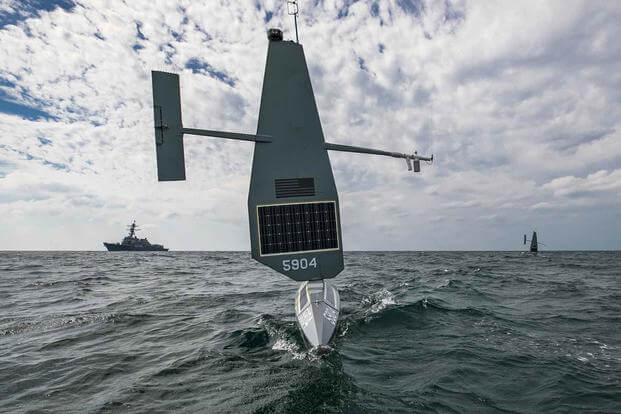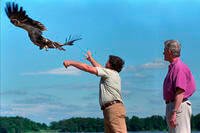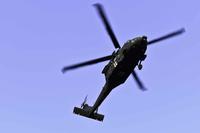The Navy's top two officials announced that they will be expanding the sea service's experiments with unmanned drones and ships to South America in the coming months, helping with the Navy's work fighting narcotics trafficking, among other missions.
The Navy's top officer, Chief of Naval Operations Adm. Mike Gilday, said that the service is "ready to scale these operations at the fleet level," building on the work of the unmanned task force it set up in the Middle East in 2021.
Gilday's boss, Secretary of the Navy Carlos Del Toro, added during a joint presentation at the service's annual Sea Air Space conference in Washington, D.C., that the "technologies and platforms we are bringing to the region will address several significant challenges."
Read Next: Air Force Will Allow More Body Fat for Recruits as Service Struggles to Find New Airmen
"These include narcotics and human trafficking, as well as economic and ecological harm caused by illegal, unreported and unregulated fishing," Del Toro said, before adding that China is a chief culprit in illegal fishing.
The Navy ramped up its work with unmanned technology like sea-going drones when it set up Task Force 59 -- a group dedicated to learning about the capabilities of the technology and how to make it work with more traditional platforms such as ships -- in the fall of 2021. Since then, the service has largely dubbed the effort a success, and the head of the task force said he is aiming to get 100 unmanned platforms in the waters of the Middle East by this July, with the help of six ally nations.
Gilday said that this expansion of the Navy's drone operations will coincide with the start of UNITAS -- a military exercise that's held annually in South America -- this July.
Del Toro suggested that the Navy's initial efforts may be focused "on the Caribbean Basin first, and then expand beyond that" in a conversation with reporters after the presentation.
Neither leader would go into how many drones they planned to put to sea initially or how many they would be shooting for in the long term.
"It's going to be informed by the progress that we see by getting an understanding of the battlespace you want to cover, and what makes most sense," Gilday said when asked about specific figures. He added, "We're just not at that point yet so we'll be doing some learning."
However, the four-star admiral did say that they planned to start with air and surface drones and that the Navy will "be doing some experience experimenting with motherships, as well."
Despite the expansion of the technology, Gilday pushed back on the idea that these small ships and drones would be flying and sailing off the coast of China anytime soon.
"I think that's a step that we're not ready to talk about yet," Gilday told reporters.
In recent years, sailing drones in less-than-friendly waters have shown the dangers for the automated ships. Last fall, Iran tried and ultimately succeeded in capturing several drones that belonged to Task Force 59.
At the time, the Navy stressed that the drones had only commercial, off-the-shelf technology aboard, limiting their value to a hostile power.
-- Konstantin Toropin can be reached at konstantin.toropin@military.com. Follow him on Twitter @ktoropin.
Related: Navy Drone Ship Nearly Captured by Iran During 5th Fleet Encounter











